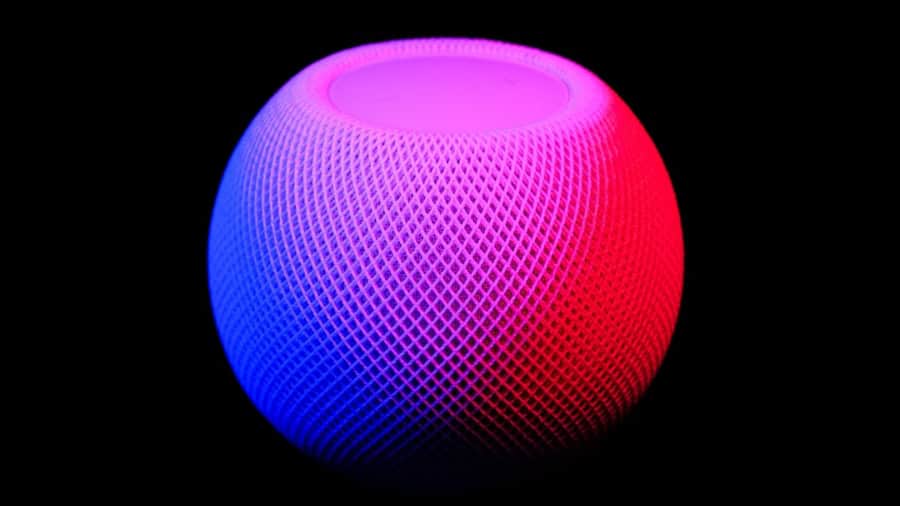The Internet of Things (IoT) has revolutionized the way we interact with our living spaces, particularly through the integration of smart home devices. These devices, which connect to the internet and communicate with each other, have transformed traditional homes into intelligent environments that enhance convenience, security, and energy efficiency. Smart home technology encompasses a wide range of applications, from automated lighting and smart thermostats to advanced security systems and health monitoring devices.
As the demand for smarter living solutions continues to grow, IoT devices are becoming increasingly sophisticated, offering homeowners unprecedented control over their domestic environments. One of the most significant areas where IoT devices are making an impact is in the monitoring and management of indoor air quality (IAQ). With people spending a substantial amount of time indoors, the quality of the air we breathe has become a critical concern.
Poor indoor air quality can lead to various health issues, including respiratory problems, allergies, and even long-term diseases. IoT devices designed for smart homes can provide real-time data on air quality parameters, enabling homeowners to take proactive measures to ensure a healthier living environment. This article delves into the importance of monitoring indoor air quality, how IoT devices facilitate this process, the types of devices available, their benefits, challenges, and future trends in this rapidly evolving field.
Key Takeaways
- IoT devices in smart homes are revolutionizing the way we monitor and control various aspects of our indoor environment.
- Monitoring indoor air quality is crucial for maintaining a healthy and comfortable living space, as poor air quality can lead to various health issues.
- IoT devices use sensors to monitor indoor air quality parameters such as temperature, humidity, air pollutants, and CO2 levels.
- Various types of IoT devices, including smart thermostats, air quality monitors, and HVAC systems, are used for monitoring indoor air quality.
- Using IoT devices for indoor air quality monitoring can lead to improved health, energy efficiency, and overall comfort in smart homes.
The Importance of Monitoring Indoor Air Quality
Common Sources of Indoor Air Pollution
Common sources of indoor air pollution include cleaning agents, paints, mold, pet dander, and even cooking fumes. These pollutants can come from a variety of sources, including household cleaning products, personal care products, and even the furniture and carpets in our homes.
The Health Risks of Indoor Air Pollution
Prolonged exposure to these pollutants can lead to a range of health issues, including headaches, fatigue, asthma exacerbation, and other respiratory ailments. Monitoring indoor air quality is essential for identifying potential hazards and mitigating their effects.
Taking Control of Indoor Air Quality
By understanding the levels of pollutants present in their homes, individuals can make informed decisions about ventilation, air purification, and other interventions. For instance, if a monitoring device detects elevated levels of carbon dioxide (CO2), homeowners can increase ventilation by opening windows or using exhaust fans. Similarly, if high levels of particulate matter are detected, it may prompt the use of air purifiers or changes in cleaning routines. Thus, regular monitoring not only helps in maintaining a healthy living environment but also empowers individuals to take control of their indoor spaces.
How IoT Devices Monitor Indoor Air Quality

IoT devices designed for monitoring indoor air quality utilize a variety of sensors to detect and measure different pollutants and environmental parameters. These sensors can track a range of factors including temperature, humidity, carbon dioxide levels, volatile organic compounds (VOCs), particulate matter (PM2.5 and PM10), and even specific allergens. The data collected by these sensors is transmitted to a central hub or directly to a smartphone application via Wi-Fi or Bluetooth, allowing users to access real-time information about their indoor air quality.
The operation of these devices often involves sophisticated algorithms that analyze the collected data to provide insights into air quality trends over time. For example, some devices can learn from user behavior and environmental changes to predict when air quality might decline based on historical data. This predictive capability enables homeowners to take preemptive actions before air quality reaches unhealthy levels.
Additionally, many IoT air quality monitors are equipped with alerts that notify users when pollutant levels exceed safe thresholds, ensuring that they can respond promptly to potential health risks.
Types of IoT Devices Used for Monitoring Indoor Air Quality
A variety of IoT devices are available for monitoring indoor air quality, each designed to cater to different needs and preferences. One common type is the standalone air quality monitor, which typically features multiple sensors capable of measuring various pollutants. These devices often come with user-friendly interfaces that display real-time data on an LCD screen or through a mobile app.
Some popular models include the Eve Room and the Netatmo Weather Station, both of which provide comprehensive insights into indoor air conditions. Another category includes smart thermostats that integrate air quality monitoring into their functionality. Devices like the Nest Learning Thermostat not only regulate temperature but also monitor CO2 levels and humidity.
By analyzing this data, they can adjust heating and cooling systems accordingly to optimize both comfort and air quality. Furthermore, smart air purifiers are becoming increasingly popular; these devices not only filter out pollutants but also monitor air quality in real-time. Brands like Dyson and Coway offer models that connect to mobile apps, allowing users to track air quality metrics and receive alerts when filters need changing.
Benefits of Using IoT Devices for Indoor Air Quality Monitoring
The advantages of employing IoT devices for indoor air quality monitoring are manifold. Firstly, these devices provide real-time data that empowers homeowners to make informed decisions regarding their living environments.
Moreover, IoT devices often come equipped with advanced features such as historical data tracking and predictive analytics. This capability allows users to identify patterns in their indoor air quality over time, helping them understand how different activities or changes in weather affect their living space. For instance, a family might notice that cooking certain meals leads to spikes in particulate matter levels; this insight could prompt them to adopt better ventilation practices during meal preparation.
Another significant benefit is the potential for energy savings. By integrating air quality monitoring with HVAC systems, homeowners can optimize their heating and cooling based on real-time data rather than relying on fixed schedules or manual adjustments. This not only enhances comfort but also reduces energy consumption and costs over time.
Challenges and Limitations of IoT Devices for Indoor Air Quality Monitoring

Despite their numerous benefits, IoT devices for indoor air quality monitoring face several challenges and limitations. One primary concern is the accuracy and reliability of the sensors used in these devices. While many manufacturers strive to produce high-quality sensors that provide precise measurements, variations in calibration and environmental conditions can lead to discrepancies in data reporting.
Users may find themselves questioning the validity of readings if they do not align with their expectations or experiences. Another challenge lies in the complexity of indoor air quality itself. The interplay between various pollutants can be intricate; for example, high humidity levels can exacerbate the effects of certain allergens or mold spores.
IoT devices may struggle to provide comprehensive insights without considering these interactions. Additionally, many consumers may lack the expertise needed to interpret the data effectively or understand how to respond appropriately to alerts generated by these devices. Privacy concerns also play a role in the adoption of IoT technology for indoor monitoring.
As these devices collect data about users’ habits and environments, there is potential for misuse or unauthorized access to sensitive information. Manufacturers must prioritize robust security measures to protect user data while ensuring transparency about how information is collected and utilized.
Tips for Choosing and Using IoT Devices for Indoor Air Quality Monitoring
When selecting IoT devices for monitoring indoor air quality, several factors should be considered to ensure optimal performance and user satisfaction. First and foremost, it is essential to evaluate the types of pollutants that need monitoring based on individual circumstances. For instance, households with pets may prioritize allergen detection while those with young children might focus on VOCs from household products.
Compatibility with existing smart home ecosystems is another critical consideration. Many consumers prefer devices that seamlessly integrate with platforms like Google Home or Amazon Alexa for enhanced functionality and ease of use. This integration allows users to control multiple aspects of their smart home environment from a single interface.
Additionally, it is advisable to look for devices that offer mobile applications with intuitive interfaces for easy access to real-time data and alerts. Features such as historical data tracking and customizable notifications can significantly enhance user experience by providing valuable insights into indoor air quality trends over time. Once a device is chosen and installed, users should familiarize themselves with its features and capabilities to maximize its effectiveness.
Regular maintenance is also crucial; this includes calibrating sensors as recommended by manufacturers and replacing filters in air purifiers as needed.
Future Trends in IoT Devices for Indoor Air Quality Monitoring
The future of IoT devices for indoor air quality monitoring is poised for significant advancements as technology continues to evolve. One promising trend is the integration of artificial intelligence (AI) into these devices. AI algorithms can enhance data analysis capabilities by learning from user behavior and environmental changes over time.
This could lead to more accurate predictions regarding when air quality might decline based on historical patterns. Another emerging trend is the development of multi-functional devices that combine various monitoring capabilities into a single unit. For example, future smart home systems may integrate air quality monitoring with energy management features or even health tracking functionalities.
This convergence could streamline user experience while providing comprehensive insights into both environmental conditions and personal well-being. Furthermore, as awareness around indoor air quality continues to grow among consumers, manufacturers are likely to focus on improving sensor technology for greater accuracy and reliability. Innovations such as low-cost sensors could democratize access to air quality monitoring by making it more affordable for a broader audience.
Lastly, regulatory frameworks surrounding indoor air quality standards may evolve alongside technological advancements. As governments recognize the importance of healthy indoor environments, there may be increased pressure on manufacturers to adhere to stringent guidelines regarding sensor accuracy and data privacy protections. In summary, the landscape of IoT devices for indoor air quality monitoring is dynamic and rapidly changing.
With ongoing innovations in technology and growing consumer awareness about health impacts associated with poor indoor air quality, these devices will play an increasingly vital role in promoting healthier living environments in smart homes around the world.
If you are interested in creating a smart home with IoT devices to monitor indoor air quality, you may also want to consider how to choose the best smartphone for gaming. Enicomp has a helpful article on how to choose a smartphone for games that can help you make the right choice for your gaming needs.
FAQs
What is IoT?
IoT stands for Internet of Things, which refers to the network of physical devices, vehicles, home appliances, and other items embedded with electronics, software, sensors, and connectivity that enables them to connect and exchange data.
How do IoT devices monitor indoor air quality in smart homes?
IoT devices monitor indoor air quality in smart homes by using sensors to measure various air quality parameters such as temperature, humidity, air pollutants, and carbon dioxide levels. These devices then transmit this data to a central hub or a smartphone app, allowing homeowners to monitor and control the air quality in their homes remotely.
What are the benefits of using IoT devices to monitor indoor air quality in smart homes?
The benefits of using IoT devices to monitor indoor air quality in smart homes include the ability to track and improve air quality in real-time, receive alerts for poor air quality, and make adjustments to HVAC systems or air purifiers to maintain a healthy indoor environment. Additionally, IoT devices can provide historical data on air quality, which can be used to identify trends and make long-term improvements to indoor air quality.
What types of IoT devices are commonly used to monitor indoor air quality in smart homes?
Common types of IoT devices used to monitor indoor air quality in smart homes include air quality monitors, smart thermostats with air quality sensors, smart air purifiers, and HVAC systems with IoT capabilities. These devices can be integrated into a smart home ecosystem and controlled through a central hub or smartphone app.
Are there any privacy or security concerns associated with using IoT devices to monitor indoor air quality in smart homes?
There are potential privacy and security concerns associated with using IoT devices to monitor indoor air quality in smart homes. These concerns include the collection and potential misuse of personal data, as well as the risk of unauthorized access to IoT devices and the data they collect. It is important for homeowners to carefully consider the privacy and security features of IoT devices and take steps to secure their smart home network.

